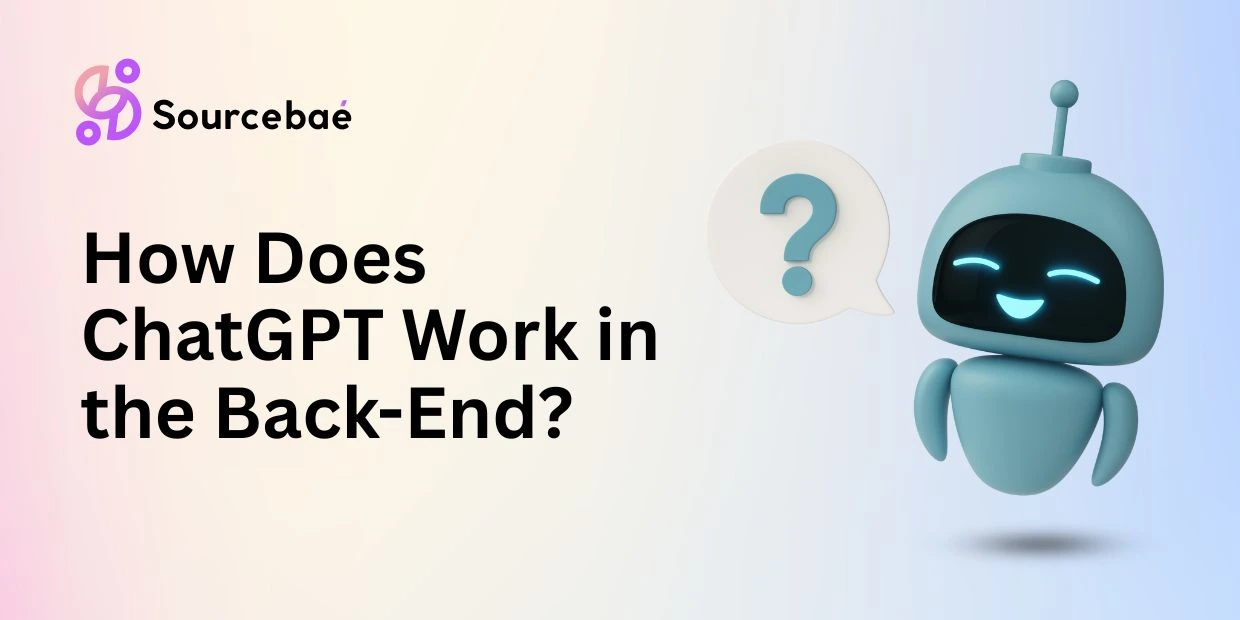In the age of artificial intelligence, ChatGPT has emerged as a revolutionary tool, capable of generating human-like text and engaging in meaningful conversations. But have you ever wondered how this remarkable AI works behind the scenes? This article delves deep into the back-end of ChatGPT, unveiling the intricate mechanisms and algorithms that power its capabilities.
Check out: ChatGPT vs Software Developers
The Technology Behind ChatGPT
Natural Language Processing (NLP)
At the core of ChatGPT lies Natural Language Processing (NLP). This technology enables the model to understand and generate human language, making it capable of engaging in conversations that feel truly natural. NLP involves several subtasks, including:
- Tokenization: ChatGPT breaks down text into smaller units called tokens, making it easier to process and understand.
- Word Embeddings: Words are transformed into numerical vectors, allowing the model to learn relationships between words and their meanings.
- Named Entity Recognition: ChatGPT can identify entities like names, dates, and locations in text, enhancing its contextual understanding.
Deep Learning
ChatGPT harnesses the power of deep learning, specifically a type of neural network known as the Transformer architecture. This architecture excels at handling sequential data, making it ideal for processing language. Within ChatGPT, layers of transformers work in tandem to process and generate text.
Pre-training and Fine-tuning
ChatGPT undergoes two key phases: pre-training and fine-tuning. During pre-training, the model is exposed to vast amounts of text from the internet, learning grammar, facts, and reasoning abilities. Fine-tuning follows, where the model is refined on a specific dataset with human reviewers providing guidance and feedback.
Check out: What is ChatGPT and Why Does It Matter
The ChatGPT Inference Process
Now, let’s dive into the actual process of how ChatGPT generates responses in real-time:
- User Input: When you interact with ChatGPT, your input is sent to the model for processing.
- Tokenization: The input text is tokenized, breaking it into smaller units.
- Embeddings: Each token is converted into numerical vectors using word embeddings.
- Transformer Layers: These vectors pass through multiple transformer layers where the model learns relationships between words and their context.
- Response Generation: Based on the input and its learned knowledge, ChatGPT generates a response.
- Output: The generated response is returned to you, completing the conversation loop.
Real-World Applications
Content Generation
ChatGPT’s back-end powers various content generation tasks, including:
- Blog Posts: It can create informative and engaging blog posts on a wide range of topics.
- Product Descriptions: E-commerce websites use ChatGPT to generate product descriptions that resonate with customers.
- Social Media Posts: ChatGPT can assist in crafting catchy and relevant social media content.
Customer Support
ChatGPT is employed in customer support chatbots, providing quick and accurate responses to customer inquiries. This not only enhances customer satisfaction but also reduces the workload on support teams.
Language Translation
The back-end of ChatGPT enables seamless language translation. It can translate text from one language to another while preserving the context and nuances of the original text.
Check out: ChatGPT Better than Google
FAQs
Q: Can ChatGPT think like a human?
A: ChatGPT simulates human-like thinking but operates based on patterns and knowledge learned from text data.
Q: How does ChatGPT handle offensive or inappropriate content?
A: ChatGPT is equipped with safety mechanisms to filter and prevent the generation of offensive or harmful content.
Q: What sets ChatGPT apart from other AI models?
A: ChatGPT’s extensive pre-training and fine-tuning processes make it versatile and capable of handling a wide range of tasks.
Q: Is ChatGPT constantly learning?
A: ChatGPT’s training is frozen once it’s deployed, but it can be updated with new training data periodically.
Q: Can ChatGPT understand slang and informal language?
A: Yes, ChatGPT is trained on a diverse range of text, including slang and colloquialisms.
Q: How does ChatGPT ensure privacy and data security?
A: ChatGPT is designed to respect user privacy, and conversations are anonymized and stripped of personally identifiable information.
Conclusion
Understanding how ChatGPT works in the back-end unveils the magic behind its ability to engage in natural conversations, generate content, and assist in various real-world applications. This AI marvel continues to evolve, pushing the boundaries of what’s possible in the world of artificial intelligence.
READ MORE: What are the Best Software Development Services in India?






